The Poor Fellow Soldiers of Jesus Christ and of the Temple of Solomon, popularly known as the Knights Templar, was the first and one of the most famous of the Christian orders. Founded for the protection of pilgrims visiting the Holy Land (Jerusalem), it existed for approximately two centuries. The Templars had several houses in Hertfordshire. When the order was suppressed in 1307, six Templars were arrested in Dinsley, near Hitchin. Four of them were imprisoned for six months in Hertford Castle which stood to the rear of the pub.
A print and text about Sir Aston Webb.
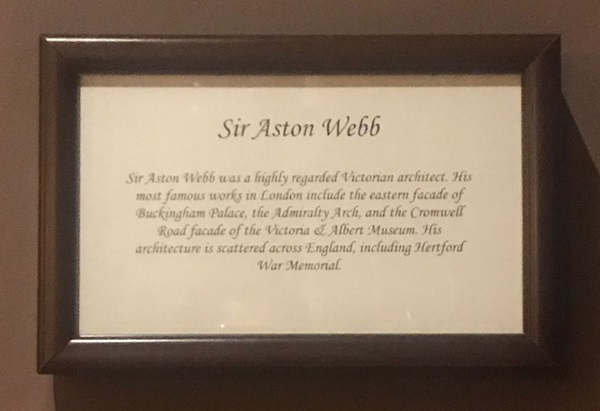
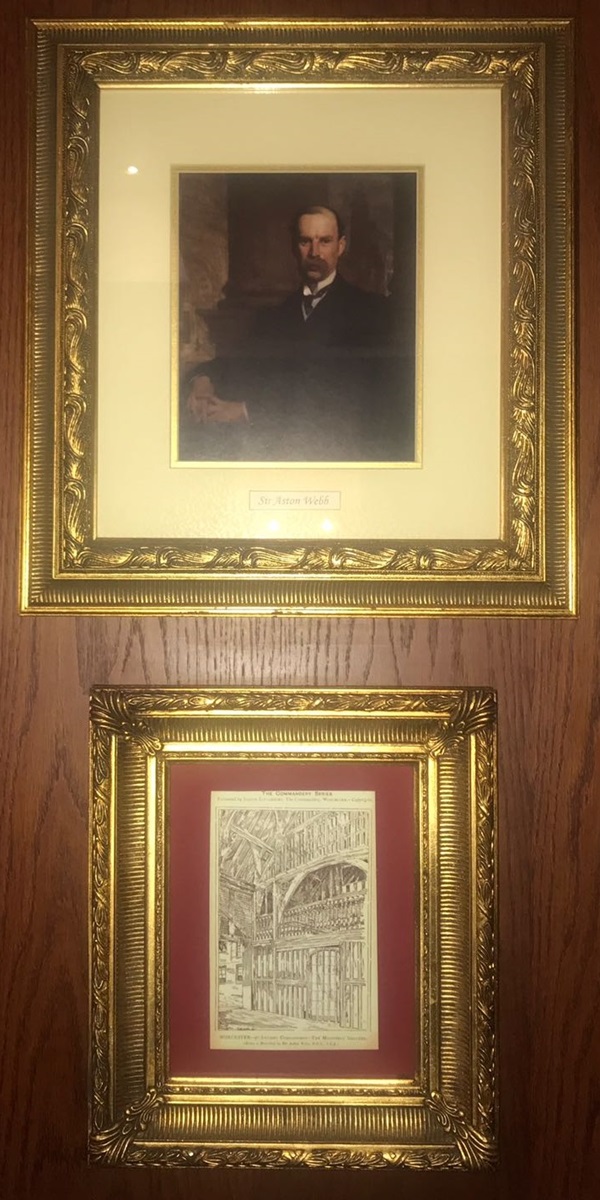
The text reads: Sir Aston Webb was a highly regarded Victoria architect. His most famous works in London include the eastern façade of Buckingham Palace, the Admiralty Arch, and the Cromwell Road façade of the Victoria & Albert Museum. His architecture is scattered across England, including Hertford War Memorial.
Illustrations of Hertford Castle.
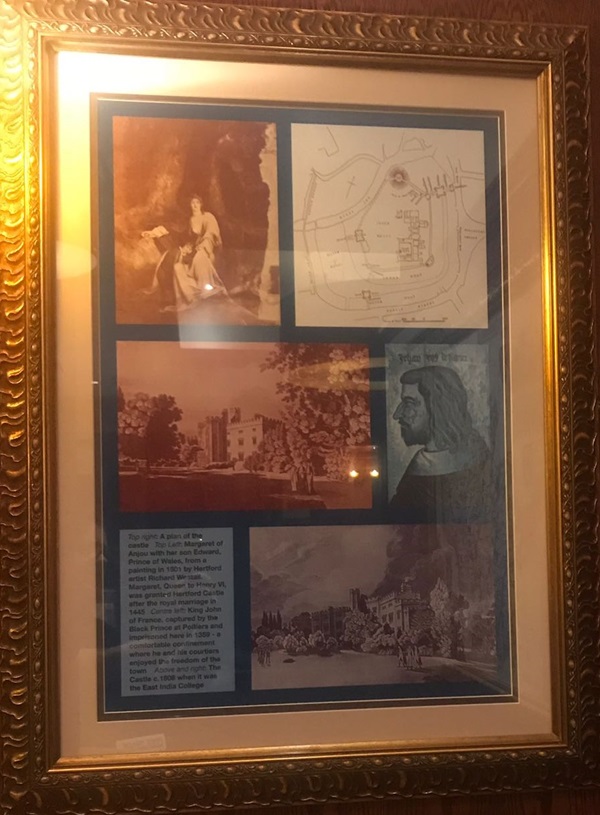
Top right: A plan of the castle
Top left: Margaret of Anjou with her son, Edward, Prince of Wales, from a painting in 1801 by Hertford artist Richard Westall, Margaret, Queen to Henry VI, was granted Hertford Castle after the royal marriage in 1445.
Centre left: King John of France, captured by the Black Prince at Poitiers and imprisoned here in 1359 – a comfortable confinement where he and his courtiers enjoyed the freedom of the town.
Above and right: The castle c1808 where it was the East India College.
An historic map of Hertfordshire.
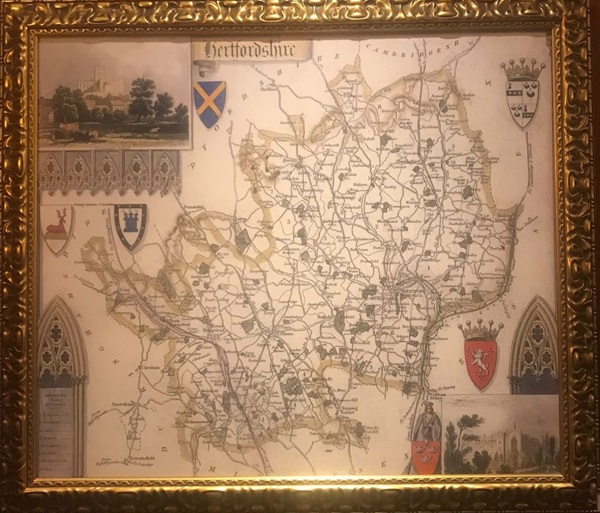
An old photograph High Street.
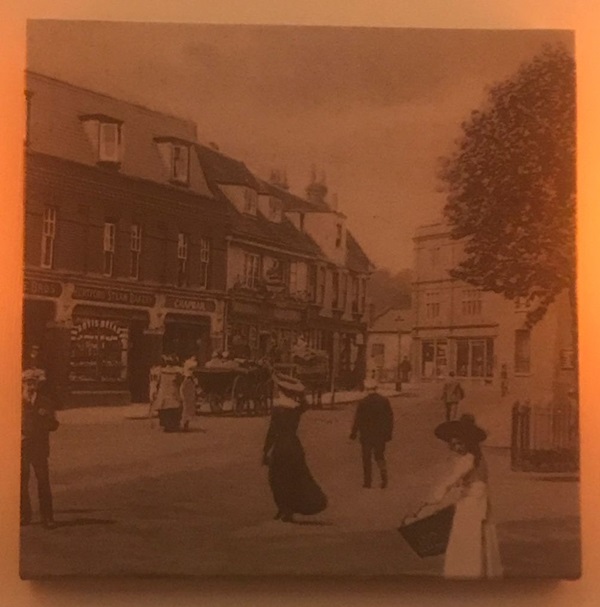
Old photographs of the town.
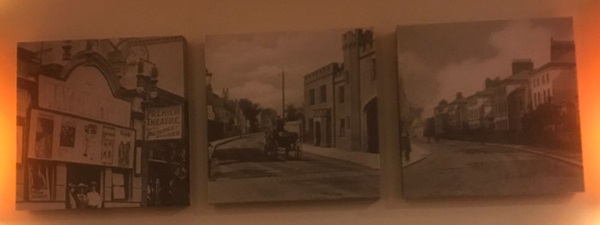
A print of William Cowper, followed by a quote of his.
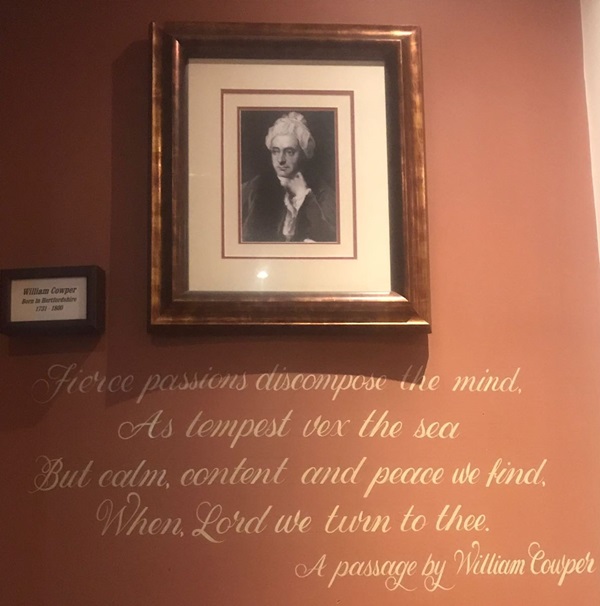
Born in Hertfordshire, 1731-1800.
“Fierce passions discompose the mind, As tempest vex the sea, But calm, content and peace we find,
When Lord we turn to thee.” – a passage by William Cowper.
Text about Jane Wenham, Witch of Walkern.
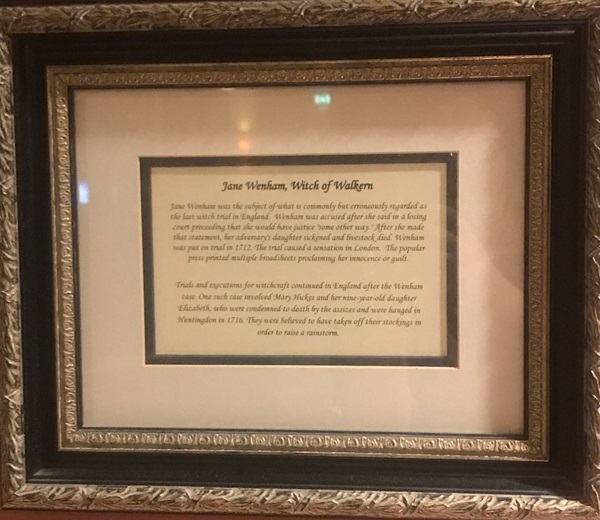
The text reads: Jane Wenham was the subject of what is commonly but erroneously regarded as the last witch trial in England. Wenham was accused after she said in a losing court proceeding that she would have justice ‘some other way’. After she made that statement, her adversary’s daughter sickened and livestock died. Wenham was put on trial in 1712. The trial caused a sensation in London. The popular press printed multiple broadsheets proclaiming her innocence or guilt.
Trials and executions for witchcraft continued in England after the Wenham case. One such case involved Mary Hickes and her nine year old daughter Elizabeth, who were condemned to death by the assizes and were hanged in Huntingdon in 1716. They were believed to have taken off their stockings in order to raise a rainstorm.
External photograph of the building – main entrance.
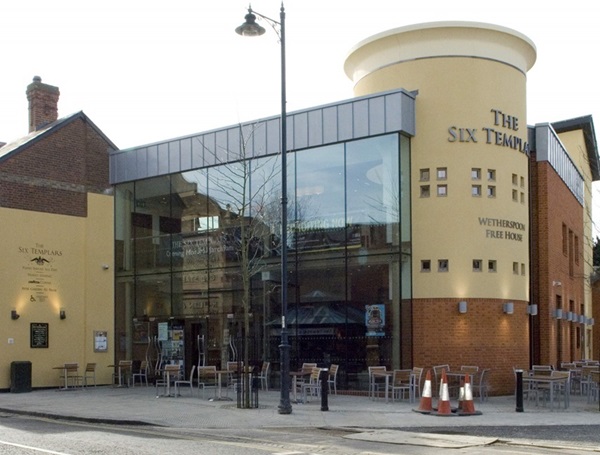
If you have information on the history of this pub, then we’d like you to share it with us. Please e-mail all information to: pubhistories@jdwetherspoon.co.uk